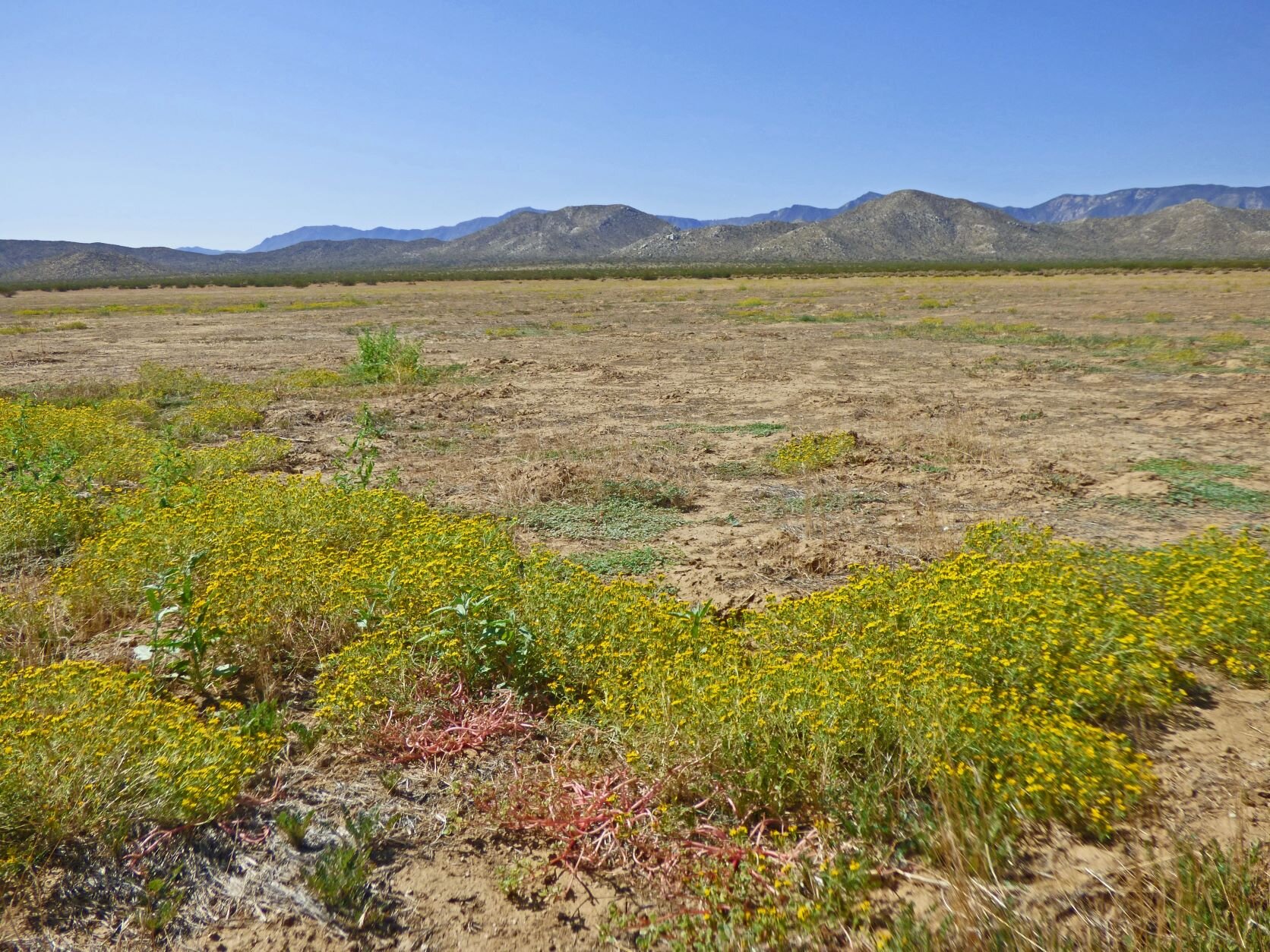By Susan Lewitt, CNPS-SD Garden Committee member
Did you by chance sow any annual native flower seeds this fall, and were any of them Purple Chinese Houses (Collinsia heterophylla)? You still have time here in our area. It is recommended to sow Purple Chinese Houses seeds in late fall directly on the surface of finely raked, medium-to-rich, moist soil. Space seeds 12-18 inches apart and expect germination within 10-30 days. You can also start seeds in peat pots in a sunny area and transplant them when they are 6 inches tall.
Purple Chinese houses are in the genus Collinsia (Family: Plantaginaceae), which has 30 species and varieties native to California, two of which are indigenous to my Clairemont and Mira Mesa neighborhoods: Collinsia heterophylla and White Collinsia (C. concolor), which is a rare variety attractive to native bees growing to 1 1/2-feet tall with bluish-purple and white flowers in spring.
Purple Chinese Houses can easily be found at native plant nurseries and CNPS native plant sales. It also grows to around 1 1⁄2-feet tall, with blue, purple and lavender flowers appearing in winter and continuing into early summer. This species does well in shade or sun, and its habitat includes meadows, disturbed places, seeps and ponds, and it is also a fire follower. Although any type of sandy, loamy, or clay soil will work, this native plant does best in rich loamy soil. It is perfect for butterfly and bee gardens and thrives under oaks and with native ferns, as well as with Clarkia spp., Sisyrinchium spp., and other native annuals. It is found in areas below 1,000 meters throughout California, except in the deserts. Purple Chinese houses require minimal water once established and will easily reseed, giving you many seasons of beauty.
An easy-to-grow perennial to consider is Blue-eyed Grass (Sisyrinchium bellum), which occurs in California in meadows, moist grass-covered areas, woodlands up to 8,000 feet in elevation; in chaparral and coastal sage scrub communities and the margins of wetland/riparian areas; and on forest floors of yellow pine forests and foothill woodlands.
Blue-eyed Grass may look like a grass, but it is actually an iris (Family: Iridaceae). Growing usually 1 foot tall, it may reach as high as 2 feet. The small purplish to bluish, and occasionally white, flowers bloom from January to July. This perennial goes dormant in the summer to prepare for the next growing season.
Blue-eyed Grass grows best in level places with loamy, moisture-holding soil, topped with deep organic mulch. It may need some watering in dryer summers, even though it is dormant. Blue-eyed Grass multiplies through self-sown seeds and can also be propagated by dividing its rhizomes.
This deer-resistant groundcover works well in butterfly gardens, but not in mass plantings by itself. Use this plant for borders, rock gardens, and wildflower meadows. Companion native plants that work well with blue-eyed grass include California Buckwheat (Eriogonum fasciculatum), Lemonade Berry (Rhus integrifolia), Blue Wild Rye (Elymus glaucus), California Brome Grass (Bromus carinatus), Deergrass (Muhlenbergia rigens), Junegrass (Koeleria macrantha), Meadow Barley (Hordeum brachyantherum), Purple Needlegrass (Stipa pulchra, aka Nassella p.), Thingrass (Agrostis pallens), Douglas’ Sagewort (Artemisia douglasiana), California Sagebrush (Artemisia californica), Spiny Rush (Juncus acutus), and Soft Rush (Juncus effusus).





